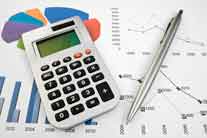 I can’t stress how important it is to keep a firm hand on the reins when trading – far too many people jump head-first into the markets, and blow their capital in the process. You have trading tools at your disposal – and they’re there to be used.
I can’t stress how important it is to keep a firm hand on the reins when trading – far too many people jump head-first into the markets, and blow their capital in the process. You have trading tools at your disposal – and they’re there to be used.
Why your most important trading tool is your trading journal
Getting yourself properly organized needn’t take much time – and it will undoubtedly save you in the long term.
This week I’d like to show you some quick and easy ways to get your trading journal on track, including:
– how to create your own template,
– sample templates you can copy,
– what needs to be there,
– and what doesn’t …
Accept your limitations
Before you even think about compiling your trading journal, you need to be realistic about the kind of person you are.
A beautifully thought out trading journal is useless, if you don’t have the discipline to keep it and – just as important – to learn from it.
If you’re the bloke who’s lost that piece of paper with his trading details on it amongst the piles of stuff on his desk – don’t create yourself a complex journal that will take hours to complete, because you simply won’t use it.
If your trading is quite intuitive or impulsive, then a facts-and-figures spreadsheet won’t tell the whole story – make sure that you log your thoughts and feelings at the time of each trade.
And remember, your trading journal isn’t some dusty piece of paper locked in a file – it’s something that you refer back to, learn lessons from – and apply to your trading tomorrow.
Top Ten Journal Guidelines
Here are 10 points to think about when compiling your journal:
1. Read through yesterday’s notes – is there a lesson you should be carrying through to today?
2. Make a note of major world events and economic numbers that are happening today.
3. What’s my plan for today?
4. How am I feeling today? Am I feeling focused? Am I harbouring a grudge about failed trades – ‘revenge trading’ can be very destructive.
5. What is my trading timetable for the day? (ie GBP/USD until 11am, then…)
6. How will I log each trade I make?
7. Which trades worked, which didn’t?
8. What are today’s market conditions? (Range-bound, trending…)
9. How did I perform today?
10. What have I learned today that I can apply tomorrow?
Deciding what to include, and what to discard
Reading through this list of guidelines, there are probably some items that you won’t want to include in your journal. That’s fine – it’s a personal record and should be what works best for you. However, it might be worth asking yourself why you don’t want to include some of these items – is there an area of your trading that you’re not addressing?
A good way to test your frame of mind at the outset is to try asking yourself these questions, compiled by trading psychology expert, Brett Steenbarger:
http://traderfeed.blogspot.com/2009/05/three-questions-for-start-of-trading.html
Recording your trades
Some people prefer to record their trades in a spreadsheet format, others on paper – go with whatever works best for you. Remember – it needs to be easy to fill in, and also easy to look back through at a later date.
If you want to set up a spreadsheet to monitor your trade results, you can do a lot worse that using this free download from Trader Mike’s blog as a starting point:
http://tradermike.net/2006/01/my_trading_journal_excel_spreadsheet/
If you prefer to keep a paper record in front of you, simply draw yourself up a template and fill it in every time you trade.
Getting the whole picture
I’m not going to pretend that these ideas are the ultimate in trading records – there are more complex and comprehensive ways of monitoring our trading, including those that cost a fair amount of money.
